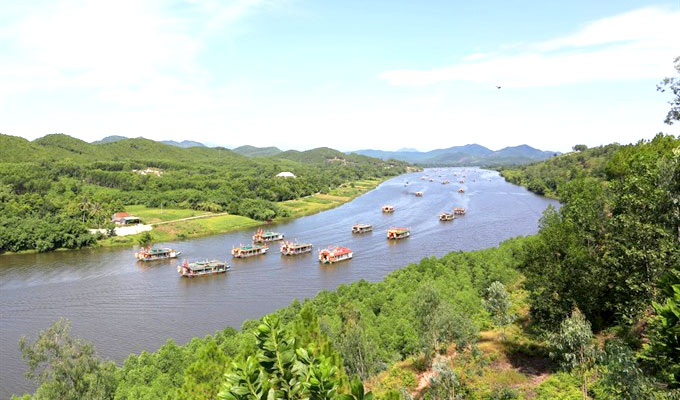A Mother Goddess ritual worshipping festival will start on August 18 at the Hon Chen Temple, a monument built by the Nguyen Dynasty (1802-1945) kings hundreds of years ago in the central province of Thua Thien-Hue.

The procession of Mother Goddess during the annual Hon Chen rituals festival
The three-day festival will include a grand boat procession from a temple in Hue City to Hon Chen sitting on a mountain up the Huong (Perfume) River.
The procession aims to welcome the Thien Y Ana Mother Goddess to the mountain temple for three days of rituals. During that time, mediums will perform rituals inside the temple while thousands will pray and provide offerings to the goddess.
It is a chance for audiences to enjoy chau van music and ritual dances with mediums dressed in colourful, old-style costumes.
However, the crowded temples are not for the faint-hearted during the festival due to the turmoil, heat and thick smoke from the thousands of sticks of incense.
The festival occurs every year in March and July of the lunar calendar. Mother Goddess worship is considered a religion in Viet Nam, and has millions of followers. Some believe deeply in the power of the ritual, including its capacity to bring back the souls of the dead to converse with their descendants.
The temple was originally built to worship Goddess PoNagar by the Champa people. When the dynasty’s kings settled down in Thua Thien-Hue, the dynasty second king Minh Mang (1820-1841) restored and named it Hoan Chen, which later was misspelled as Hon Chen.
Later, King Dong Khanh (1885-1889) expanded the temple, named it Hue Nam, and facilitated the practice of Mother Goddess worshipping as he believed the Mother Goddess had helped him gain the throne. However, local residents have continued to call it Hon Chen.